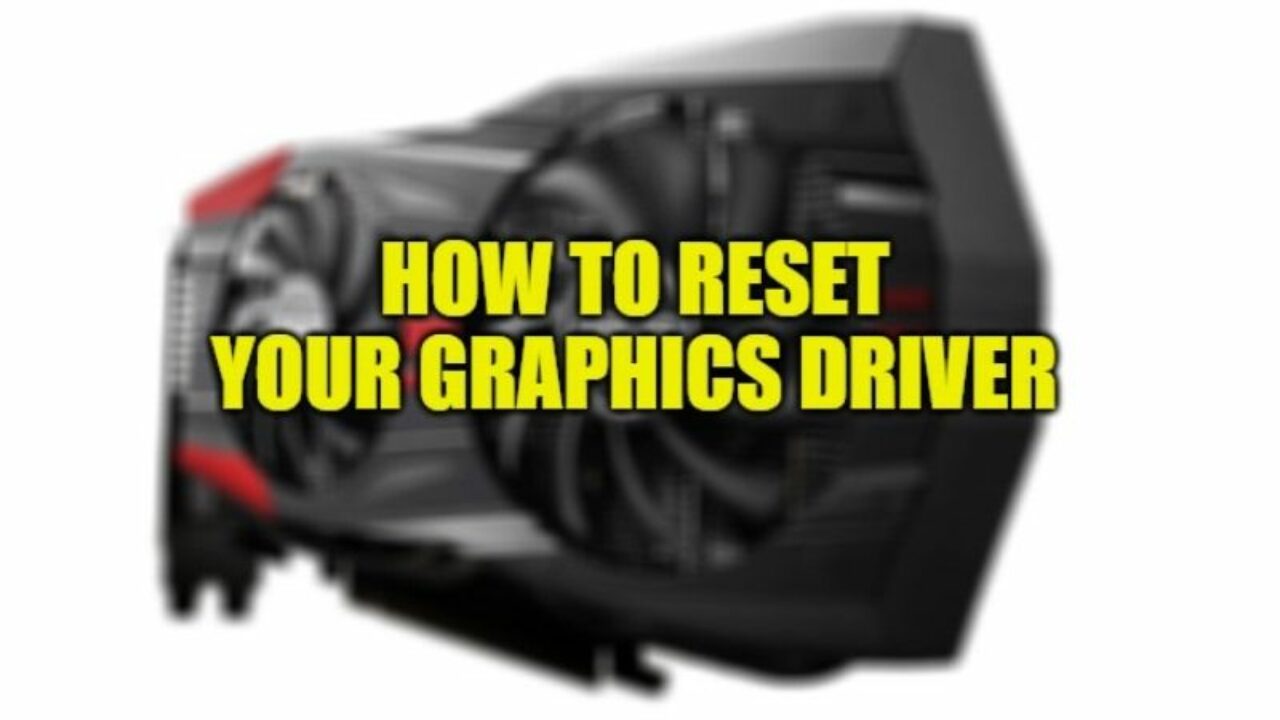Would you like assistance with your graphic driver? Don’t Panic! Here’s How to Reset Graphics Driver in Minutes. An out-of-date graphic driver can cause your computer to run slower, display graphics incorrectly, or even crash. Resetting your graphic driver is a significant first step to troubleshooting the problem if you’re experiencing any of these issues. Resetting the driver is sometimes a simple and easy way to fix the problems without completely uninstalling and reinstalling the driver. Resetting your driver can be tricky, but fortunately, you can take some straightforward steps to make the process easier.
If you need to reset your graphics driver, we’ll show you the steps and answer your questions. This article will provide simple steps on how to reset the graphics driver properly without going through the tedious process of reinstalling. Let’s get started!
8 steps on how to reset graphics driver
Step 1: Download and Install Driver Software
Visit the company’s website that makes your graphics card and download the most recent driver software. Once downloaded, run the installation file and follow the prompts to install the new driver.
Step 2: Backup Your System
Make regular backups of your files and data before modifying your machine. It is recommended to regularly back up your files and data before making any changes to system.
Step 3: Uninstall Old Driver
To uninstall the old driver, open the Device Manager, locate the graphics driver, and right-click on it. Select “Uninstall device” from the list of options when you right-click on your mouse following. Follow the prompts to remove the application from your device.
Step 4: Restart the Computer
After uninstalling the old driver, restart your computer to apply the changes.
Step 5: Reinstall New Driver
Once your computer has restarted, run the installation file for the new driver you downloaded in Step 1. To install the most recent driver, follow the instructions.
Step 6: Refresh the graphics settings
After installing the new driver, open the graphics settings and make any necessary adjustments, such as changing the resolution or refresh rate.
Step 7: Test New Driver
Open your favourite games or other graphics-intensive applications to test the new driver. Check for any display issues, crashes, or other performance issues.
Step 8: Revert to the Original Settings
If the new driver does not solve the issue, you can revert to the original settings by following steps 3 and 4 to uninstall the latest driver and reinstall the old one.
In conclusion, resetting your graphic driver is a quick and easy way to fix issues with your graphics performance. Following these 8 steps, you can easily reset your graphic driver and return to using your computer as usual. If the problem persists, you may need further professional assistance or contact your graphics card manufacturer.
Tricks and techniques on how to reset graphic driver
In addition to the 8 steps mentioned above, below are some additional tips and tricks on how to reset graphic driver:
Use a third-party driver uninstaller:
Sometimes, the built-in driver uninstaller may not remove all the files associated with the old driver. A third-party driver uninstaller like Display Driver Uninstaller (DDU) can help in such cases. DDU removes all the leftover files and registry entries related to the old driver, ensuring a clean installation of the new driver.
Create a restore point on your system:
Creating a restore point is always a good idea before making any changes to your system. It allows you to revert to your previous system settings if something goes wrong during the driver reset process.
Disable antivirus software:
Occasionally, antivirus software can interfere with the installation of drivers, affecting your graphics performance. To avoid this, temporarily disable your antivirus software before installing the new driver.
Install drivers in safe mode:
Safely installing drivers can help avoid interference from other software running on your system. When your computer restarts, press F8 repeatedly until the Advanced Boot Options option displays to enter safe mode. Select “Safe Mode” and then install the new driver.
Check for updates regularly:
Checking for updates periodically ensures that you have the latest driver software installed on your system, which can improve your graphics performance and fix any issues you may be experiencing.
Conclusion
Resetting your graphics driver is a great way to improve the performance of your computer. Following the easy steps, techniques and tricks outlined in this article will help you to learn how to reset graphics driver quickly and easily. If you have an older version of Windows, you may need to use a third-party program like DDU or SFCScan to reset your driver. Finally, check for any updates after the reset, which could further improve your performance. However, if you still face issues while resetting your graphic driver, contact professionals or IT experts who can help you further.



